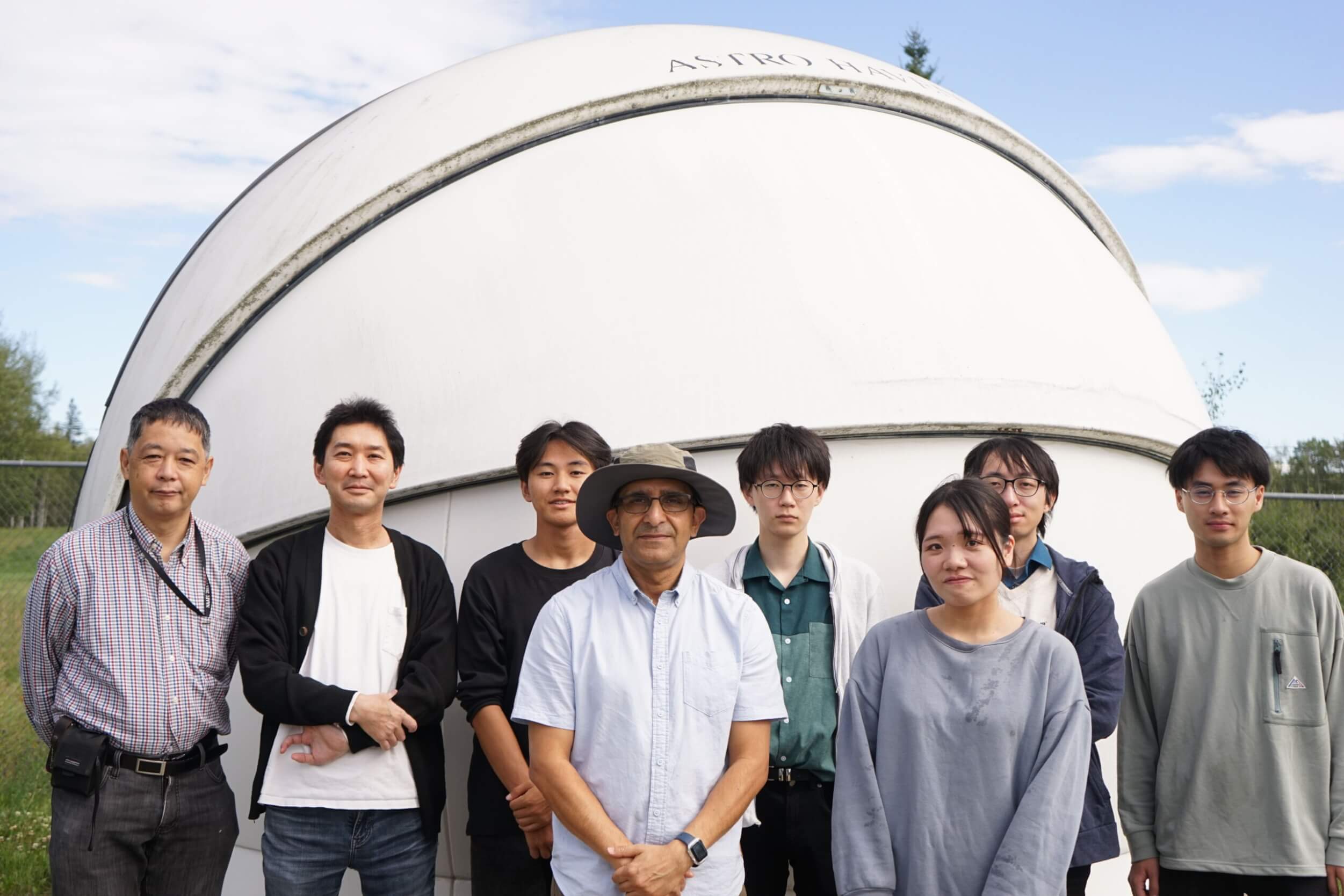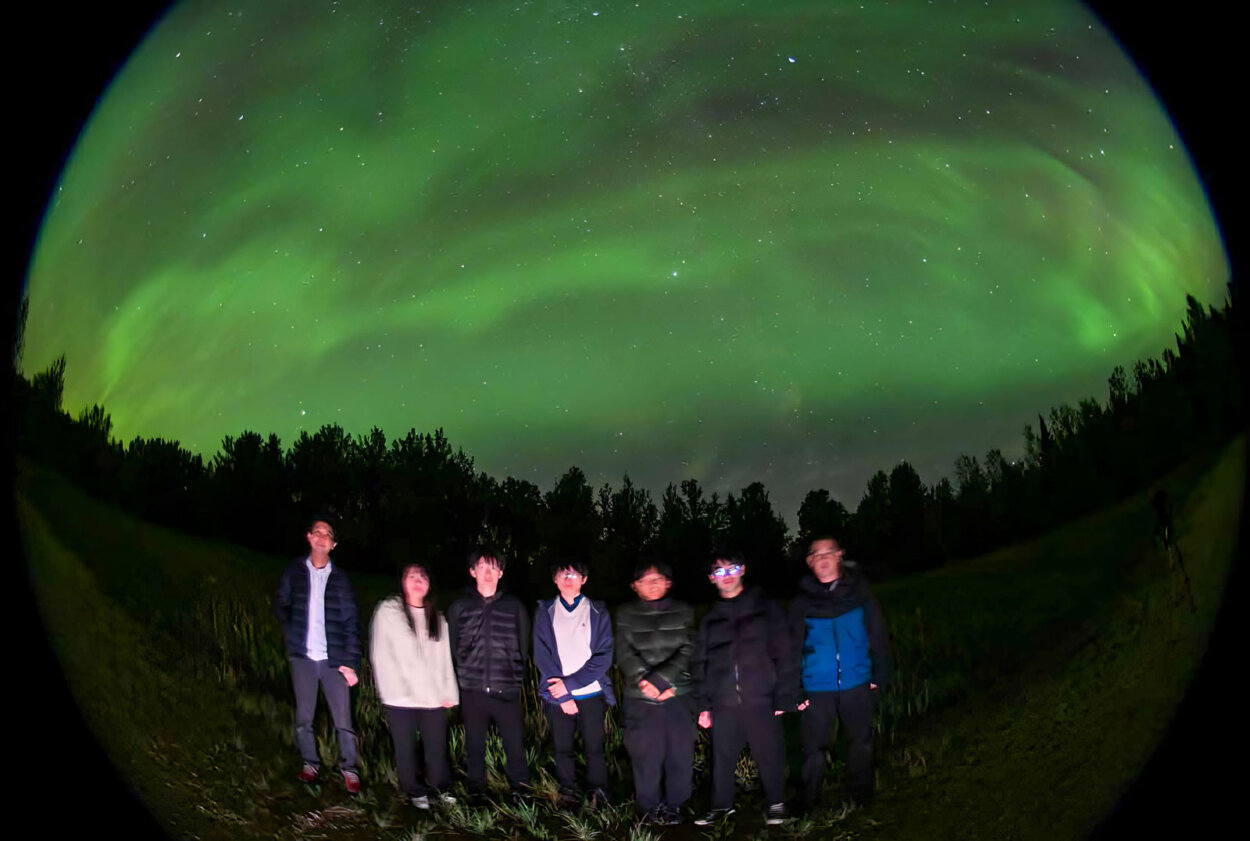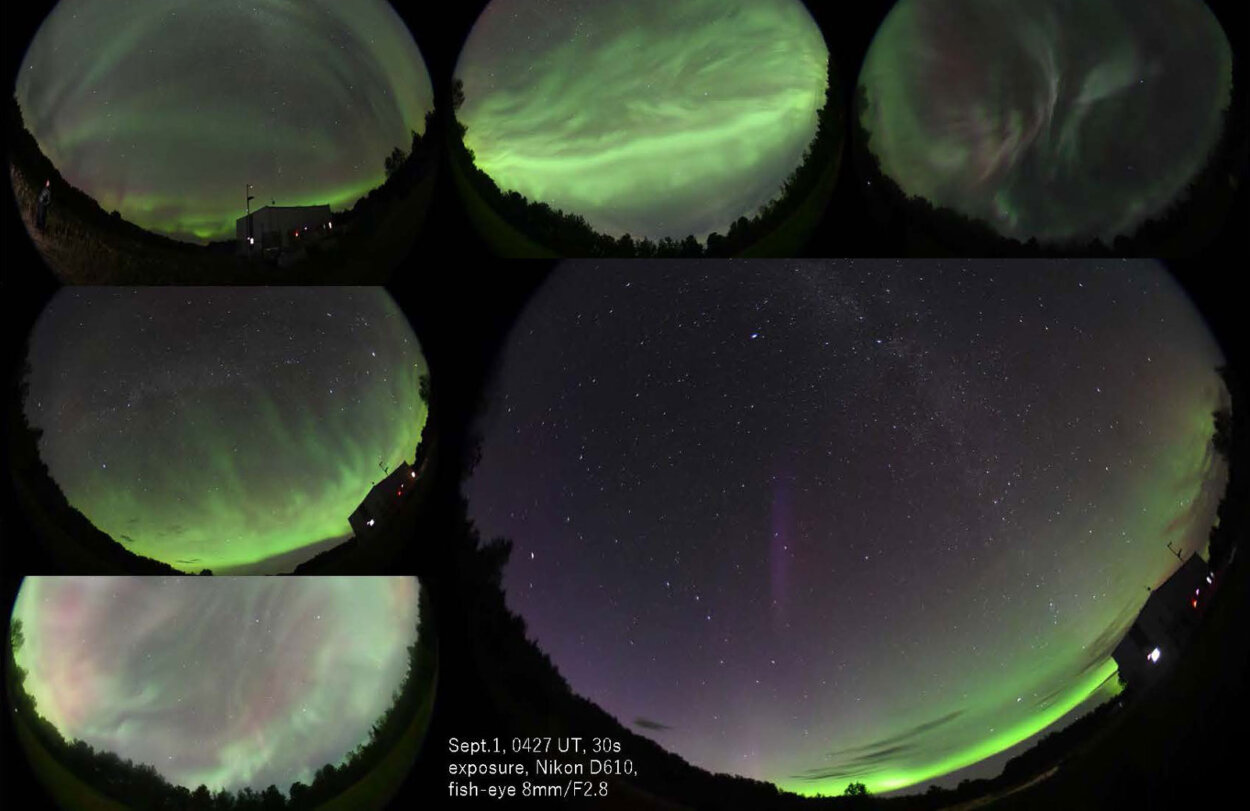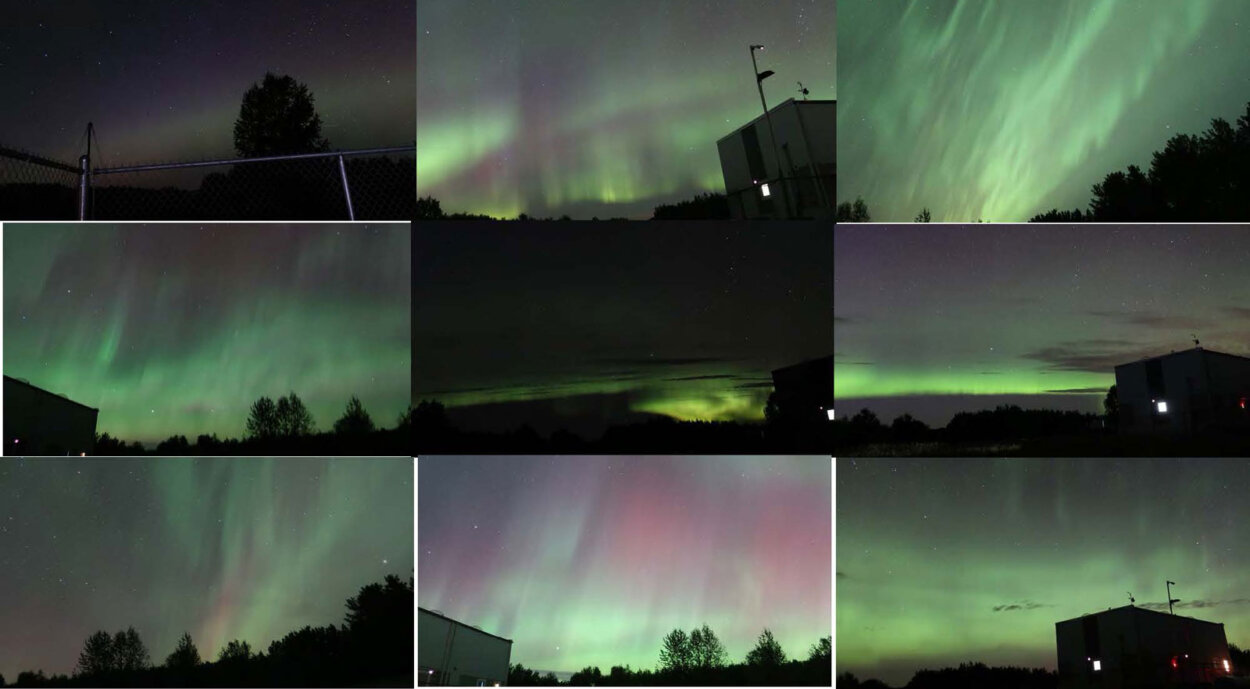Japanese colleagues support Athabasca University aurora research with equipment, instrumentation expertise
New equipment at Athabasca University's space science observatories will help researchers get a better look at proton auroras in the atmosphere and determine what impact they may have on the ozone layer.
Dr. Martin Connors, a professor of astronomy, math, and physics in the Faculty of Science and Technology, has been working with researchers from Nagoya University and the National Institute for Polar Research (Tokyo) for decades. This ongoing collaboration has seen Japanese equipment and instrumentation installed in the Athabasca University Geophysical Observatory sites (AUGO I and AUGO II), the first of which was built in 2005.
When AUGO II was built in 2012, away from the light pollution that affects even a small rural community like Athabasca, the first observatory fell into disuse. Recently, Connors worked with AU's facilities team to reinstall a dome on the old observatory to make it usable once again.
Aurora research comes into focus
The purpose of the equipment installed at both observatories on the most recent visit, in early September, is to allow the researchers to determine the height at which these proton auroras occur. By taking an observation of the same phenomenon from two different fixed points, researchers will be able to more precisely determine the height of these auroras in the atmosphere.
"It's classical surveyor-type stuff, except these things are fuzzy," he said. "The math on fuzzy things gets a bit more complicated. We'll use statistical techniques to determine what the heights were."

Impact on Earth's ozone layer
While this has yet to be confirmed with the research, Connors said he and his colleagues believe proton auroras may have a negative impact on the ozone layer, which protects the Earth from the sun's radioactive particles. They believe this impact may be more pronounced when proton auroras occur lower in the atmosphere.
"We've come up with this interesting tie between proton auroras and our atmosphere, and a bit lower down than expected," Connors said. "So determining the height of auroras, including proton auroras, that we're the world specialists in, is important."
It is too soon, however, to say with any certainty what implications this research might have in terms of mitigating any potential damage to the atmosphere that these auroras cause-although Connors noted with optimism that international treaties have been successful in repairing damage caused to the ozone layer in the past.


